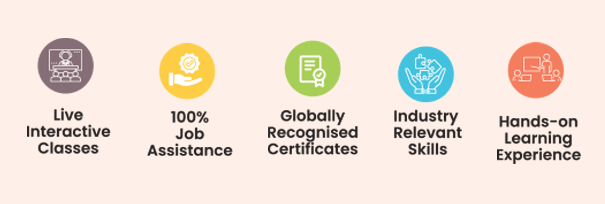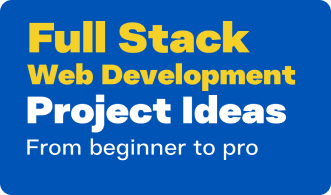Everything is becoming increasingly user-centric these days. Businesses have realised that where you sell is as important as how you sell. This is one of the biggest reasons why the world has moved on to digital means of marketing, leaving the traditional methods behind.
Traditional marketing methods, such as television and radio ads, newspaper ads, and billboards printing were a general shot at the right person seeing it. With more advanced techniques to better understand the target audience, who there are, where they are, and how to influence them, digital marketing offers a more concentrated response.
One of the key aspects in grabbing the attention of your target audience is creating a user-centred design. When a product is designed, it should be carefully analysed who is the intended user for it. That is the entire essence of user-centred designs. But this definition is not enough to completely understand the depth of its importance.
Let us begin to unveil different aspects of user-centred design by digging deeper.
What is User-Centred Design?
When any product is designed, it is important for the designer to understand who will use it, and how and why they will use it. This simple piece of information will aid the developer in creating a lovable product.
Creating people-centric products requires the expert to gain a deep understanding of those who will use the product. Knowing their motivation behind using it is also necessary.
But why are user-centred design processes needed in the first place? Let us explain!
We are certain you must have heard about user experience. This user experience is leveraged by user-centred design to gain knowledge about more effective paths of creating product experiences. The primary step is to get to know the end user a little better. And this alteration is view has made all the difference.
In traditional design thinking, the entire product was about the business goals. There was no to little consideration about the end users. Today, however, the tables have turned and has led to a big difference for the companies.
There are a lot of things to learn about user-centred design. Before we get to those, it is integral to understand the principles of user-centred design. Let us explore them in the next segment.
Principles of User-Centred Designs
To implement a user-centred design successfully, you should be following these four core principles. Your designs are going to be eye-catchy and meaningful if you stay hooked to these principles.
1. Make the Users a Part of your Design Process from the Beginning
Since we are talking about user-centric designs, ensuring that the users are a part of your design process from the beginning will be helpful. With the incorporation of users in the project’s lifecycle, your final product is sure to benefit.
Sometimes, what might feel insignificant from your perspective, might be the nagging point for your end user. When a user is a part of your project lifecycle from the start, you will keep getting to know where changes are required to make it better.
2. Incorporate User Feedback into the Product Lifecycle
Directly in relation with the first principle is the second one. This suggests you incorporate the user feedback into the product lifecycle. The outcome is sure to be one that is going to be what a company expects when investing so much time, money, and resources.
User feedback and interviews can be insightful and useful. Making alterations and any additions as per the user need and wants will make the customer more inclined towards your product. Religiously incorporating user feedback is a key game-changer.
3. Clarify Requirements
One of the key things to be clear of at the very beginning of the project is the problem in question. Many people set out to find answers and are uncertain what the question actually was.
If you do not wish to repeat this mistake made by many, then we suggest you think deep and long about the problem statement. You should devote sufficient amount of time in looking at the requirements, the why’s, and how’s, and the who’s of the task in hand. Once you are done with it, you will find yourself going over things in a smoother fashion.
4. Follow an Iterative Design Process
We have already talked about making the user a part of the process from the beginning and incorporating their feedback. However, the best way to go about it is to keep making changes as per the new recommendations and suggestions.
This way, if something goes wrong or you feel something can be made better, then that keeps on happening at the same time as development. Hence, saving a lot of time and energy. As a result, the planning of release cycles with updates can be done as per priorities.
Once everything looks good to both the inclusive user and the developer, the product becomes ready to be released.
What is the Process of User-Centred Design?
There are various steps followed by a team to completely implement the user-centred design paradigm. Here is how these steps can be summarised in simple terms –
1. Research – Collection and Analysis of Data
Collection of the right kind of data is one of the most crucial steps in the creation of any user-centred design. To be able to collect all necessary data about their users, developers can go through various means. This incorporates creating use-cases, scenarios, and personas while keeping their focus on their target audience.
2. Ensuring Everything Needed is Collected
Once it has been set that a product is to be made, it comes down to understanding everything related to it. Every inch of requirement needs to be identified and collected related to the product and its production.
This is one of the more crucial phases in the process of user-centred design. A close interaction with users is also important in this step. It allows the team to understand their needs and fine-tune their workings accordingly further closely.
3. Design the Product
As we have mentioned above, having an iterative process of product design is essential. Everything that follows hereon is based on the product requirements and goals that have already been established.
There are various kinds of software engineering practices from which a team can take their pick. Some of the most commonly chosen ones are agile model and a waterfall model.
The best way to execute the user-centred design is to have multidisciplinary teams participate in the process. When so many members having different backgrounds, experiences, and lookouts come together, the product is sure to be one that gets the best from them all. However, the one thing to ensure here is that no personal bias should hinder or influence the process of development.
4. Test your Product with Real Users
Usability testing is what a designed products undergoes to get the user feedback.
This testing is essential because is aids in understanding the problems, if any, faced by the user when they are interacting with the product. Consequently, actions are taken to further optimize the product before finally releasing the product for the wider markets.
5. Continuous Monitoring of the Product and the Users
Once everything is done and amended, it is time for the product to go into the market. But this is not the end of its lifecycle. It still needs to be monitored to fully understand the kind of impact it is creating in the market. Getting user feedback is integral while looking at the qualitative indicators.
Observing user behaviour and reaction is one of the key things that need to be done after the release of the product into the wild.
Conclusion
When we talk about user-centred design, only an expert is capable enough to get things streamlined, sorted, and done. If you think this is the field for you and this is what attracts you the most, then we know just the place to get trained and certified.
Begin your career in the field of UI/UX design training course with Grras Solutions. This is the best institute in the country for all top IT courses and certifications.
Get the chance to learn from leading tech experts. Every trainer at Grras Solutions is an expert in their respective fields. They offer you the chance to learn and grow along with them. Make the most of their knowledge and skills now.
The best part about learning from experts at Grras is that you do not just learn theoretically from them. You will be working on live projects to gain practical skills. These skills will further help you in finding the right job for new beginnings. Thus, even at beginner level, you will have practical skills to boast about.
So, choose your training institute wisely because this one place will change your entire future in the field. Begin with Grras Solutions and make the most of the numerous benefits this place has to offer. Enroll with the best today because only then the best tomorrow is guaranteed.






